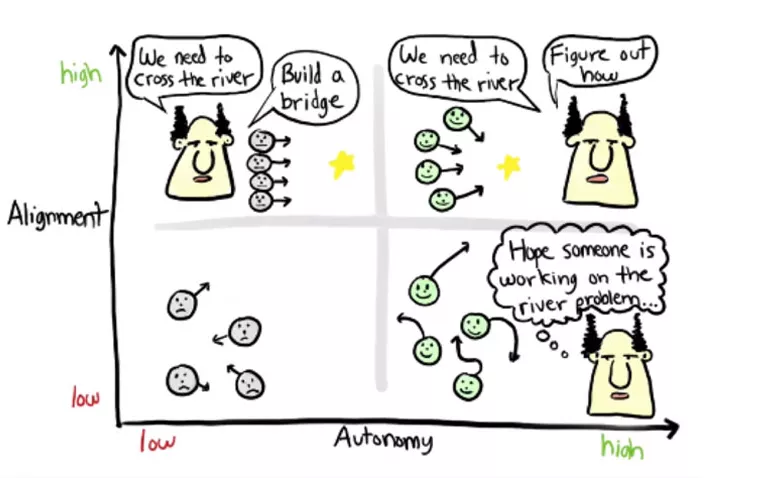Towards a Self-Managing Organization

Spotify has its agile culture, Zappos its holacracy. More and more organizations, in the Netherlands too, are migrating to new structures based on a vision that is anything but traditional. Why?
The old hierarchical working practices have had their day. And this makes sense. After all, how can you be innovative if you are still working with structures that have been existing for decades? In that time, the world around us and the requirements of customers have changed completely.
As far as I am concerned, the era of multiple management layers and bureaucracy is over. The result is that we, as an organization, now find ourselves in a process of development towards a self-steering organization. This is the first blog in a series in which I would like to shed light on this process from our perspective and also reflect on the lessons we are learning along the way. Because, I can already report, it is anything but a smooth road.
Why?
Why do I want to turn Computest into a self-steering organization? When we acquired Pine Digital Security last year, I knew that change was inevitable. With Pine on board, our sphere of activities would be bigger. And as we grew, I saw that the tendency to play 'pass the parcel' was increasing. Teams were becoming larger and more anonymous. People would complain about one another to their managers but not address each other directly. They were becoming ever more remote from our customers. Our services were becoming more complex, so I considered appointing project managers. But who would manage them? Ultimately, these are all things that do nothing for our customers. Whereas customers are the very reason why we do what we do. Incorporating our new colleagues from Pine would make Computest much bigger at a stroke: we would go from having 65 to 95 employees. I was advised by the Board to look for an operational director. In other words, to add another layer of management. That was an absolute no-go for me, and that was when I started delving into new organizational models and structures.
The first company that inspired me was Spotify, which has structured its engineering department in accordance with agile principles; this is sometimes known as the 'Spotify model'. The organization is divided into autonomous teams that collaborate on a task while being free to decide how they solve the issue at hand, without losing sight of the company's larger objective. Or, to use the terminology, they need to stay 'aligned'.
[caption id="attachment_3899" align="aligncenter" width="780"]

Relationship between autonomy and alignment according to Henrik Kniberg, Agile Coach at Spotify[/caption]
Is this new? Not entirely. Software developers have been accustomed to working in this way for some time. Developers and System Operators used to work separately from one another on their own little islands. In the popular DevOps environments, these islands have been merged and they now work according to a strictly defined process. This delivers efficiency, more flexibility and ultimately better results.
A step further
With Computest, I would like to go a step further than an agile culture or DevOps method for particular parts of the organization. This is where it became a brain-teaser for me. It is a great working method which I fully support and which we were already using in our own development department. But how to use a development method within multidisciplinary teams? These teams provide services to customers but they do not develop products, a significant difference.
So we are moving towards a completely self-steering organization, which will involve transforming not just the departments containing our technical specialists but literally the entire organization. That means no more administrative, project or secretarial departments. In fact, no departments, no managers and no hierarchy at all. We work with captains and discipline coaches and we form teams that all operate in an agile way. Management too? Oh wait, there is no management anymore! ;-) Every discipline is represented on every team; sales, administration, test specialists, hackers, HR, marketing. This is a real challenge, because we are bringing together colleagues who often have very different ideas about the best way to achieve an objective.
My goal is for a team to become self-steering to the extent that it can help the customer from A to Z without involving another team and without the influence of managers – from quotation to invoice. Effectively that means turning the entire structure upside down. And this is exactly what I had in mind!
In a future blog, I will discuss in more detail how we tackled this process.
Hartger Ruijs is founder and CEO of Computest Group BV. Computest specializes in performance and security testing for (online) applications. Hartger is regularly posting on Computest's transition towards a self-steering organization. These posts will also be published on Corporate Rebels' blog to provide followers insights into the ongoing transition.

